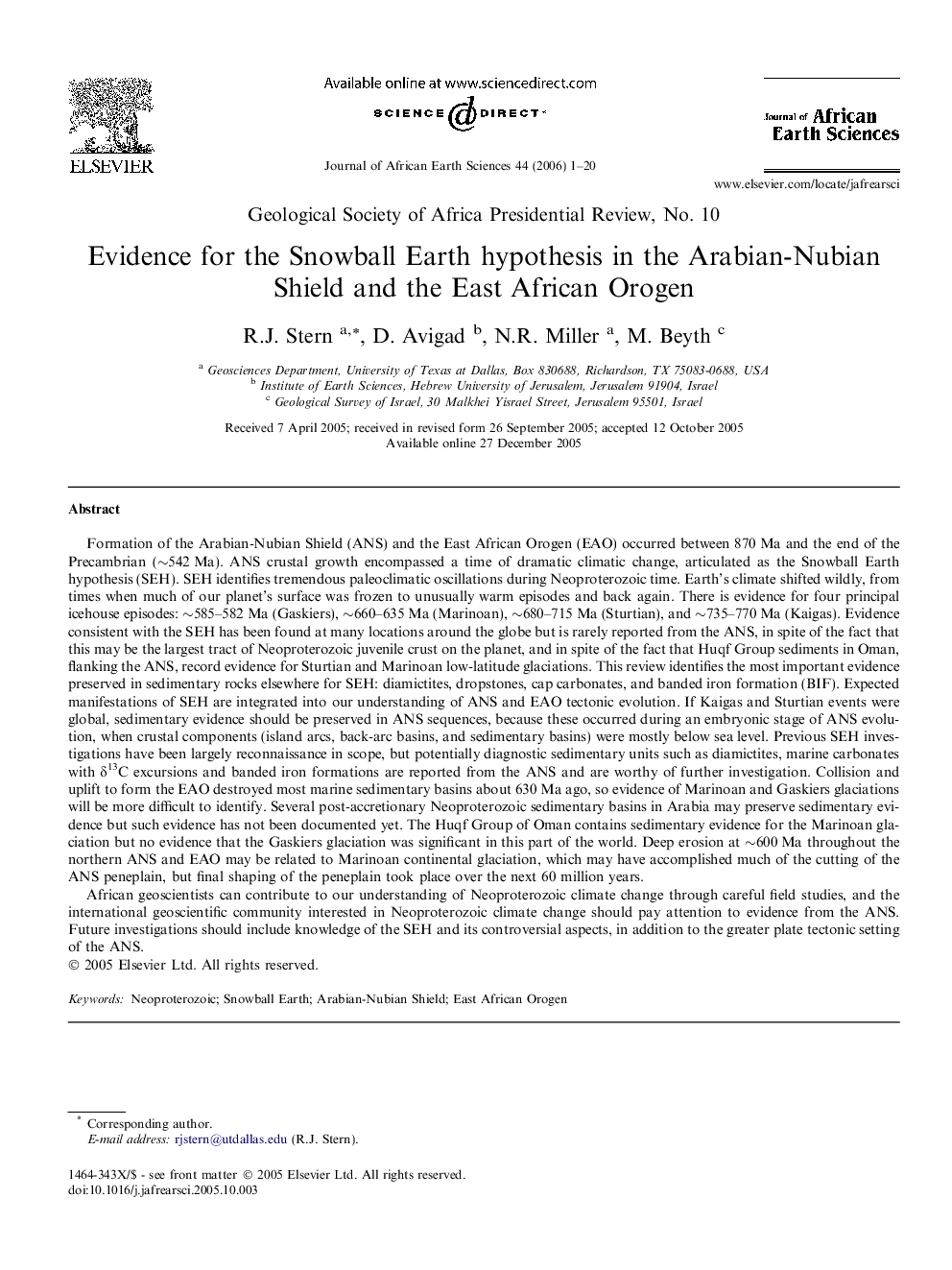| کد مقاله | کد نشریه | سال انتشار | مقاله انگلیسی | نسخه تمام متن |
|---|---|---|---|---|
| 4729585 | 1356544 | 2006 | 20 صفحه PDF | دانلود رایگان |

Formation of the Arabian-Nubian Shield (ANS) and the East African Orogen (EAO) occurred between 870 Ma and the end of the Precambrian (∼542 Ma). ANS crustal growth encompassed a time of dramatic climatic change, articulated as the Snowball Earth hypothesis (SEH). SEH identifies tremendous paleoclimatic oscillations during Neoproterozoic time. Earth’s climate shifted wildly, from times when much of our planet’s surface was frozen to unusually warm episodes and back again. There is evidence for four principal icehouse episodes: ∼585–582 Ma (Gaskiers), ∼660–635 Ma (Marinoan), ∼680–715 Ma (Sturtian), and ∼735–770 Ma (Kaigas). Evidence consistent with the SEH has been found at many locations around the globe but is rarely reported from the ANS, in spite of the fact that this may be the largest tract of Neoproterozoic juvenile crust on the planet, and in spite of the fact that Huqf Group sediments in Oman, flanking the ANS, record evidence for Sturtian and Marinoan low-latitude glaciations. This review identifies the most important evidence preserved in sedimentary rocks elsewhere for SEH: diamictites, dropstones, cap carbonates, and banded iron formation (BIF). Expected manifestations of SEH are integrated into our understanding of ANS and EAO tectonic evolution. If Kaigas and Sturtian events were global, sedimentary evidence should be preserved in ANS sequences, because these occurred during an embryonic stage of ANS evolution, when crustal components (island arcs, back-arc basins, and sedimentary basins) were mostly below sea level. Previous SEH investigations have been largely reconnaissance in scope, but potentially diagnostic sedimentary units such as diamictites, marine carbonates with δ13C excursions and banded iron formations are reported from the ANS and are worthy of further investigation. Collision and uplift to form the EAO destroyed most marine sedimentary basins about 630 Ma ago, so evidence of Marinoan and Gaskiers glaciations will be more difficult to identify. Several post-accretionary Neoproterozoic sedimentary basins in Arabia may preserve sedimentary evidence but such evidence has not been documented yet. The Huqf Group of Oman contains sedimentary evidence for the Marinoan glaciation but no evidence that the Gaskiers glaciation was significant in this part of the world. Deep erosion at ∼600 Ma throughout the northern ANS and EAO may be related to Marinoan continental glaciation, which may have accomplished much of the cutting of the ANS peneplain, but final shaping of the peneplain took place over the next 60 million years.African geoscientists can contribute to our understanding of Neoproterozoic climate change through careful field studies, and the international geoscientific community interested in Neoproterozoic climate change should pay attention to evidence from the ANS. Future investigations should include knowledge of the SEH and its controversial aspects, in addition to the greater plate tectonic setting of the ANS.
Journal: Journal of African Earth Sciences - Volume 44, Issue 1, January 2006, Pages 1–20